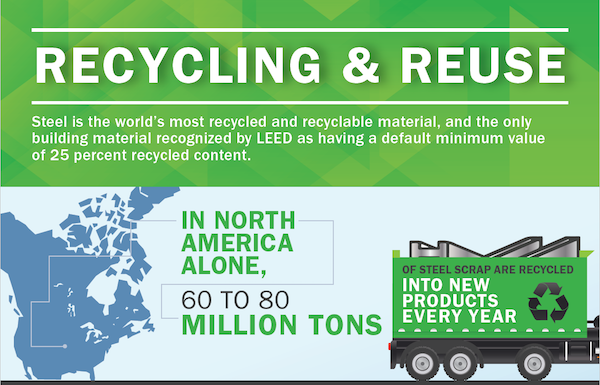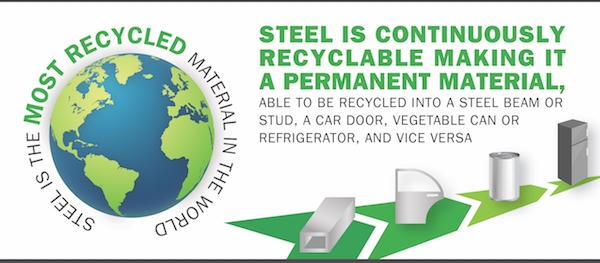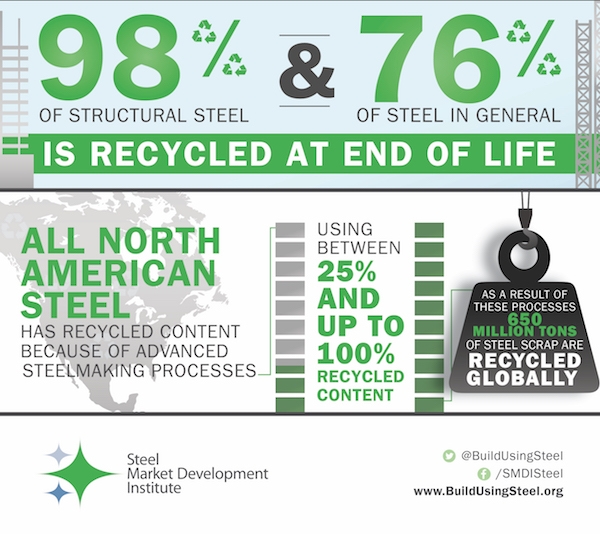Recycling and Reuse

A key factor in steel’s sustainability is its ability to be recycled again and again without losing quality. All North American steel products contain a significant amount of recycled content, including some products consisting of more than 90 percent. Steel is the world’s most recyclable and recycled material, not only in theory, but in practice on construction and demolition sites throughout North America.

- Steel is the world’s most recycled material. In 2015 alone, 64.5 million tons of steel were recycled in the United States and 7 million tons were recycled in Canada. Each year, more steel by weight is recycled in North America than paper, plastic, glass, copper, lead and aluminum combined.
- Steel is North America’s most recycled material with more steel recycled than paper, plastic, glass, copper, lead and aluminum combined. Steel, when recycled, loses none of its inherent properties and can be remade into new steel for buildings, cars, bridges, cans, appliances and an infinite number of other end uses.

- Today, 97 percent of steel by-products are reused. The overall recycling rate for steel from all industries combined is 76 percent, with some construction segments reporting values as high as 98%. The 60-80 million tons of steel recycled each year help the steel industry save enough energy to power 20 million homes for one year.
- While other building materials can only be recycled into a lower-quality product (down-cycled), steel can be recycled over and over again and remade into new products (multi-cycled) without any loss of quality. This makes it the first and only true cradle-to-cradle building material.
- All steel products contain recycled steel. Steel is the only building material recognized by LEED as having a default minimum value of 25 percent recycled content, and is 100 percent recyclable at end of life. In contrast to many other building materials, steel is routinely collected in aggregate quantities from construction and demolition sites and recycled into new steel products